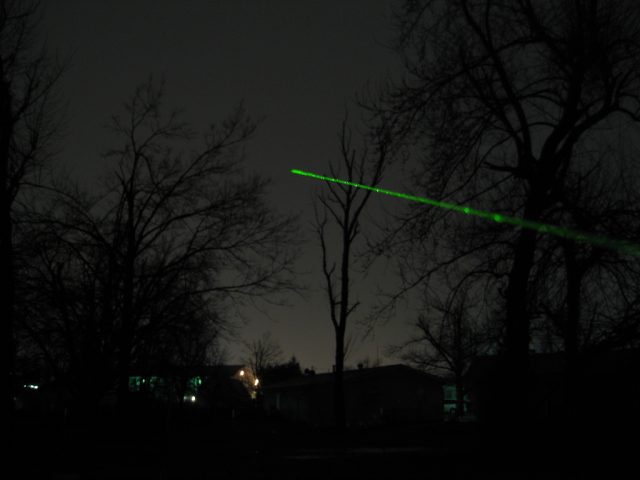
The two cases were filed in recent weeks, and they were indicted by grand juries on Thursday.
According to an FBI affidavit concerning one case, a nearby Kern County Sheriff’s Office Air-1 helicopter was flying above Bakersfield, California (110 miles northwest of Los Angeles) in January 2015 on routine evening patrol when the pilot and tactical officer were struck by a laser. As the helicopter moved around, the laser continued to track them. The officers used their night vision goggles and a forward looking infrared (FLIR) camera to track the man that fired the laser.
The sheriff’s deputies radioed down to their colleagues on the ground, who eventually encountered one of the defendants, Jose Javier Rosas. Once Rosas was booked and read his Miranda Rights, he told the law enforcement officials: “I’m so sorry. I’m stupid.” Rosas added that he just wanted to “see how far this thing would go.”
As a result of this incident, Air-1 was “forced to disengage from a robbery investigation,” prosecutors said in a statement.
The second incident took place in September 2014 in Fresno, California, approximately 190 miles southeast of San Francisco. It involved a man who claimed that he did not intentionally fire his laser at a California Highway Patrol (CHP) aircraft. Rather, defendant Jeremy Scott Danielson told the CHP officers dispatched to the scene that the laser was clipped to his pocket and accidentally went off. "It just shot upward from my pocket and hit the plane.”
The CHP wasn’t having it. As the FBI states in its affidavit, “Danielson did not provide any other response as to how the laser could have hit the aircraft numerous times.”
Mollie Halpern, an FBI spokeswoman, told Ars that there were 3,894 reported laser strikes nationwide in 2014—a slight reduction of 1.67 percent compared to 2013.
Ferocity from Fresno
Both cases are being brought by Assistant United States Attorney Karen Escobar, who has unintentionally become the nation’s top prosecutor for laser strike cases. Among her casework, the prosecutor brought United States v. Rodriguez to trial—that case famously resulted in the defendant receiving a sentence of 14 years for his laser strike crime.Rosas and Danielson have become numbers 10 and 11 in a series of federal criminal cases coming from the Eastern District of California (centered in Fresno County) since 2007. Combined with an additional 20 state convictions from this region, this district alone constitutes 35 percent of the less than 100 total laser strike convictions nationwide—state and federal—since the FBI began keeping track a decade ago.
Part of why laser strike cases happening in and around Fresno County have been successfully prosecuted is that three local and state law enforcement agencies—the Fresno Police Department, the Fresno County Sheriff’s Department, and the California Highway Patrol—all operate helicopters and low-flying aircraft from the Fresno International Airport, essentially flying patrol in concentric circles.
It’s notoriously difficult for authorities to pinpoint where a laser strike is being fired from, particularly when fired at a commercial aircraft. But when fired against law enforcement aircraft (particularly helicopters that can easily hold their position in the air), it is far easier.
Last year, Escobar also pointed out that as a largely rural county, there are less crimes for law enforcement to respond to compared to larger areas in the state, such as Los Angeles County. By comparison, Fresno County only has about one million people spread across just 6,000 square miles.
Both Rosas and Danielson face a maximum prison term of five years and a fine of up to $250,000 if convicted of aiming the beam of a laser pointer at an aircraft.
reader comments
137